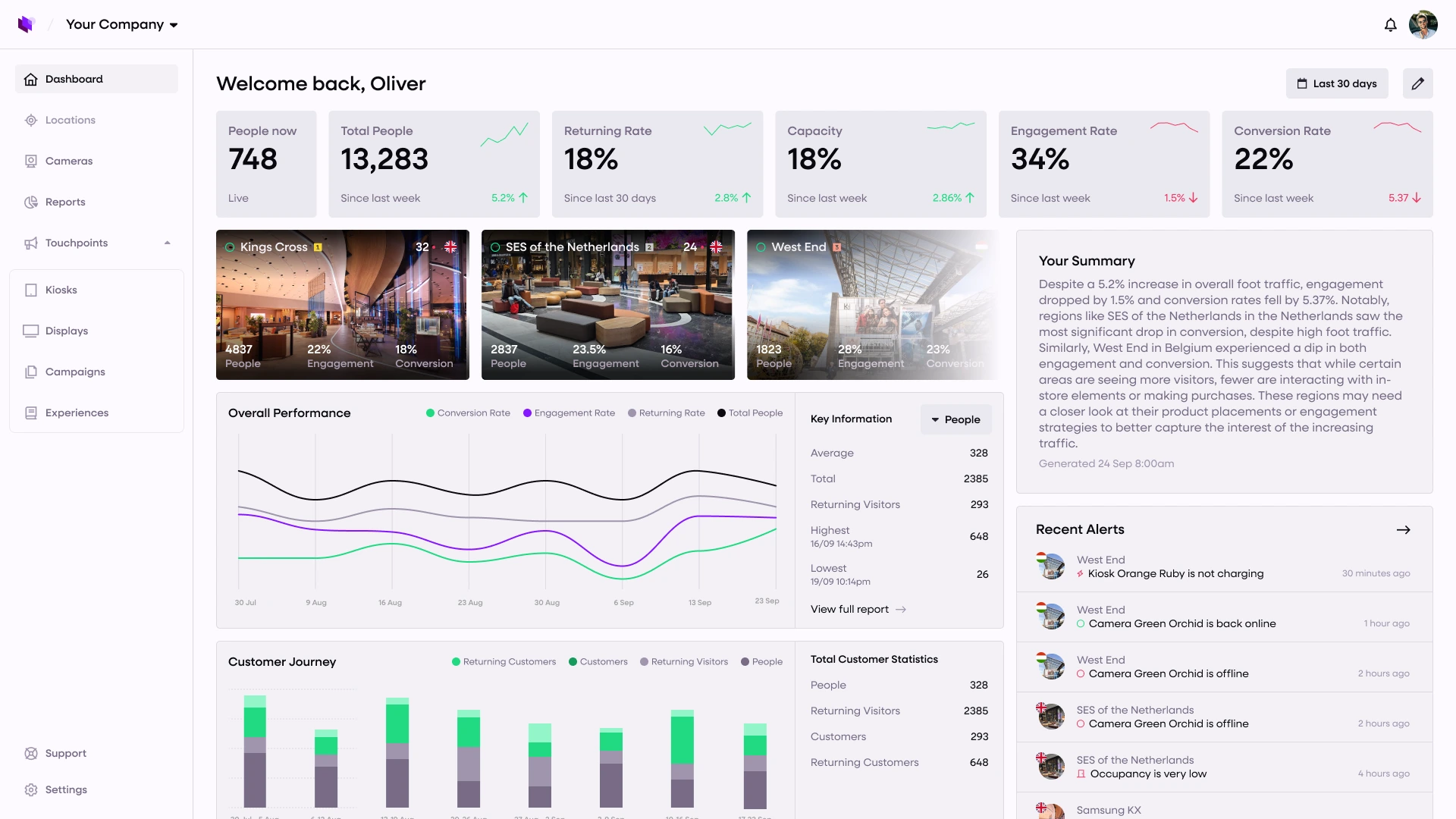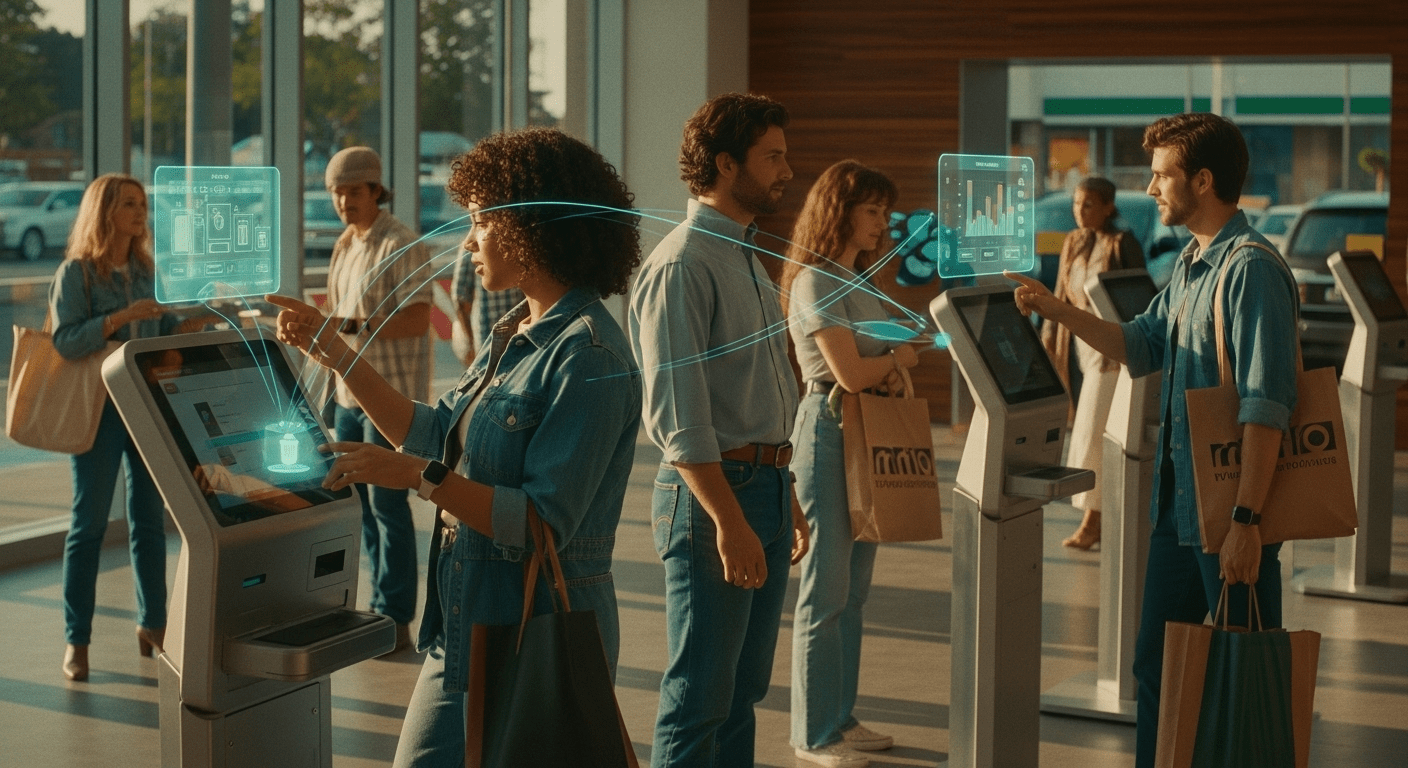


Reach out to us!
Start your AI journey today and let us help you understand your business better. Send us an email or book a meeting with one click!


Reach out to us!
Start your AI journey today and let us help you understand your business better. Send us an email or book a meeting with one click!
16th October 2025

Leo
Artificial intelligence has quietly become the new operating system of modern retail. It is behind the product recommendations on your phone, the personalised offers that appear in your inbox, and even the way shelves are stocked in your local store. As McKinsey notes, retailers that use AI effectively can increase profitability by up to 60 percent compared to their peers. For years, the conversation around AI focused on futuristic possibilities. Today, it is about practical transformation and measurable results.
From customer experience to inventory management, AI is creating retailers that are faster, more responsive, and more human in the way they understand people. The technology is no longer just predicting what customers might buy, it is predicting what businesses need to do next.
Every retailer faces the same challenge: customers expect more while margins continue to shrink. AI has emerged as the bridge between ambition and efficiency. According to Salesforce, 84 percent of retailers already use AI in some form, mainly to improve customer experience and automate repetitive tasks. The real advantage, however, lies with those who are integrating AI across their entire operation rather than treating it as a side project.
McKinsey’s research shows that retailers using AI across pricing, marketing, and operations are outpacing competitors in both sales growth and customer loyalty. These organisations aren’t just collecting data-they are using it to anticipate customer intent, adjust promotions in real time, and plan stock based on predicted demand.
The result is a business that reacts instantly to change. Where once teams waited for weekly reports, they now make hourly decisions backed by live data. AI turns insight into instinct.
If retail were a living organism, AI would be its nervous system-constantly processing signals, identifying patterns, and sending the right instructions to each part of the body. This is what connected stores are already beginning to achieve.
Imagine a retailer where shelf cameras automatically detect when an item is running low and send restock alerts to the warehouse. The same data triggers a small price adjustment to encourage faster sales of slower-moving stock. Meanwhile, customer interaction data from kiosks feeds into predictive models that fine-tune campaigns for the next day.
As Harvard Business Review explains, the real value of AI in retail isn’t about replacing people but amplifying human judgment. It helps staff make better decisions faster by providing context that would be impossible to calculate manually. AI does not remove intuition; it enhances it with evidence.
Customers notice when a brand remembers them. They also notice when it doesn’t. AI allows retailers to create experiences that feel personal without crossing the line into intrusive. By analysing browsing behaviour, purchase history, and real-time interactions, AI can deliver suggestions that are genuinely relevant instead of random.
Salesforce found that 56 percent of customers expect offers to always be personalised, and 78 percent are more likely to repurchase from brands that deliver that experience consistently. The key is subtlety. Personalisation should feel natural, not engineered and the best retailers use AI quietly in the background so customers feel understood rather than observed.
For example, a connected store might recognise that a customer who buys sportswear online regularly also checks in at the physical location. When that person visits in-store, digital signage adjusts to show new product lines or exclusive deals in their preferred category. AI provides the insight, but it is human creativity that turns it into an experience.
Stock mismanagement costs the global retail sector billions every year. Shelves sit empty in one store while overstock piles up in another. AI helps close that gap. Predictive algorithms analyse footfall, local events, and even weather patterns to anticipate demand accurately.
A McKinsey study found that retailers applying AI-driven forecasting can reduce inventory levels by up to 30 percent while maintaining product availability. The same technology enables dynamic replenishment, meaning stock automatically shifts to where it is most likely to sell. The result is less waste, lower storage costs, and happier customers who can find what they need when they need it.
One global apparel brand reported a 50 percent reduction in out-of-stock incidents after implementing an AI-powered inventory system. Instead of reacting to shortages, the retailer now predicts them days in advance.
Much of AI’s impact happens in places customers never see. In marketing departments, algorithms are testing thousands of creative variations to find what resonates best. In logistics, route optimisation tools calculate the fastest, most sustainable delivery paths. In HR, AI supports smarter scheduling by predicting busy periods and matching staff availability.
These invisible optimisations add up. McKinsey’s data shows that AI can cut supply chain forecasting errors by up to 50 percent and reduce logistics costs by as much as 15 percent. Those savings ripple through the entire business, freeing up resources to invest in better experiences.
Technology is powerful, but it still needs people. In AI-enabled retail environments, the most successful teams treat the technology as a co-worker rather than a threat. AI can handle complex calculations in milliseconds, but it takes a human being to turn those insights into meaningful action on the shop floor.
As HBR highlights, empowering staff to use AI-driven insights builds trust in both the data and the company’s direction. When employees see that technology is there to make their jobs easier-not to monitor them-they adopt it faster. For instance, AI-generated task lists can prioritise what needs attention without overwhelming staff, helping them spend more time with customers and less on admin.
Training plays a huge role here as retailers that provide ongoing support see stronger adoption and better results. AI should feel like part of the culture, not a separate system that requires translation.
AI can deliver remarkable results, but it comes with responsibility. Shoppers want to know how their data is used. Regulators across Europe and North America are tightening rules around transparency and ethical AI. This means retailers must go beyond compliance-they need to communicate clearly.
A Deloitte survey found that 62 percent of consumers are more likely to buy from brands that explain how AI improves their experience. Simple steps like visible privacy signage, optional consent for personalised marketing, and easy access to data policies help build that trust.
The goal is not to hide AI behind the curtain but to show how it makes experiences better, safer, and more relevant.
AI is also becoming a key driver of sustainability in retail. Predictive models help reduce overproduction, cut waste, and optimise energy use in stores. When AI integrates with occupancy tracking and environmental controls, lighting and HVAC systems can adjust automatically based on footfall.
Forbes recently highlighted that AI-enabled sustainability efforts can lower energy costs by up to 20 percent while reducing carbon emissions significantly. These savings go beyond financial metrics-they demonstrate a commitment to responsible innovation that customers increasingly demand.
AI’s influence is expanding rapidly. As generative AI tools become more accessible, they will start shaping retail creativity-from automated product descriptions and visual merchandising to campaign ideation. At the same time, predictive analytics will evolve to anticipate not just customer demand but entire market shifts, helping retailers stay one step ahead of disruption.
The next stage of AI in retail will not just automate but also advise. It will suggest pricing adjustments, identify emerging trends, and even predict which products could become future bestsellers. For retailers, this means a more agile, resilient, and forward-looking operation that can thrive in uncertainty.
Artificial intelligence is no longer the future of retail-it is the foundation of it. The retailers leading the next decade are those who understand that AI is not a replacement for human judgment but a partner that amplifies it.
By connecting systems, predicting demand, and creating more personal experiences, AI turns data into decisions and decisions into growth. It makes retail smarter, faster, and more human at the same time.
The path forward is not about choosing between technology and people-it is about uniting them. Those who master that balance will define what modern retail looks like in 2026 and beyond.
See how Merlin Cloud helps retailers unlock smarter operations and create more connected, data-driven experiences that put people first, discover more at merlincloud.ai